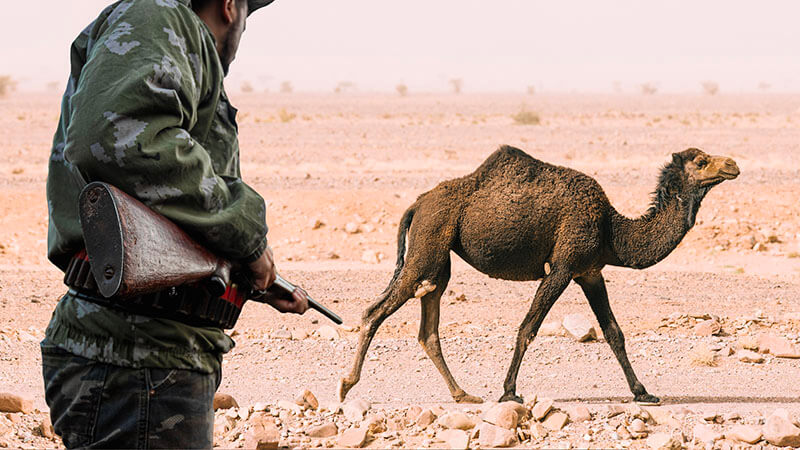
AE 1291 - The Goss
New Echidnapus Monotreme Mammal Discovered in Queensland
Learn Australian English by listening to this episode of The Goss!
These are conversations with my old man Ian Smissen for you to learn more about Australian culture, news, and current affairs.

In today's episode...
Ever heard of an “echidnapus“? Join Pete and his dad as they delve into the fascinating world of paleontology and the recent discovery of three new extinct monotreme species, including this intriguing creature that bridges the gap between echidnas and platypuses.
They’ll discuss the significance of these findings, the challenges of reconstructing ancient ecosystems, and the ongoing debate between “splitters” and “lumpers” in taxonomy. Plus, they’ll share their awe at the incredible diversity of life on Earth and the convergent evolution of similar traits in unrelated species.
Tune in for a mind-expanding conversation that will leave you pondering the mysteries of the past and the wonders of evolution.
** Want to wear the kookaburra shirt? **
Get yours here at https://aussieenglish.com.au/shirt
Improve your listening skills today – listen, play, & pause this episode – and start speaking like a native English speaker!
Listen to today's episode!
This is the FREE podcast player. You can fast-forward and rewind easily as well as slow down or speed up the audio to suit your level.
If you’d like to use the Premium Podcast Player as well as get the downloadable transcripts, audio files, and videos for episodes, you can get instant access by joining the Premium Podcast membership here.
Listen to today's episode!
Use the Premium Podcast Player below to listen and read at the same time.
You can fast-forward and rewind easily as well as slow down or speed up the audio to suit your level.
Transcript of AE 1291 - The Goss: New Echidnapus Monotreme Mammal Discovered in Queensland
G'day, you mob! Pete here, and this is another episode of Aussie English, the number one place for anyone and everyone wanting to learn Australian English. So today I have a Goss episode for you where I sit down with my old man, my father, Ian Smissen, and we talk about the week's news, whether locally Down Under here in Australia or non-locally overseas in other parts of the world, okay.
And we sometimes also talk about whatever comes to mind, right. If we can think of something interesting to share with you guys related to us or Australia, we also talk about that in The Goths. So these episodes are specifically designed to try and give you content about many different topics where we're obviously speaking in English and there are multiple people having a natural and spontaneous conversation in English.
So it is particularly good to improve your listening skills. In order to complement that, though, I really recommend that you join the podcast membership or the Academy membership at AussieEnglish.com.au where you will get access to the full transcripts of these episodes, the PDFs, the downloads and you can also use the online PDF reader to read and listen at the same time. Okay, so if you really, really want to improve your listening skills fast, get the transcript, listen and read at the same time. Keep practising. And that is the quickest way to level up your English. Anyway, I've been rabbiting on a bit. I've been talking a bit. Let's just get into this episode guys. Smack the bird and let's get into it.
Dad.
Pete.
What's going on?
You're just overhang from the previously recorded episode.
Yeah. You guys all have to listen to the slang one. Hopefully.
No, don't.
You'll enjoy that.
It's crap.
Yeah. How's it going? Which episode do you want to do now? We have. We've just started the recording and we haven't even chosen the story.
I know. This is preparation, Pete.
Oh, I've got them open here. I just didn't choose which one.
All right, well, pick one.
Well, you choose-.
Echidnapus!
Echidnapus. That's the one I got in front of me.
Yeah.
With old mate.
With old-.
With old mate. Um.
Tim?
Yeah. Tim's on the Tim Flannery.
Yeah.
Famous Australian author and scientist.
Yes.
I noticed him. He's looking very healthy.
He is. He's lost a lot of weight. I hope that's by choice.
Yeah. That's it. So the echidna was fossil of potential echidna and platypus. Ancestor may point to Australian age of monotremes.
Yeah. 100 million years old.
So an ancient monotreme dubbed the echidnapus, which shares platypus and echidna like characteristics, is one of three extinct species of egg laying mammal unveiled by palaeontologists. Today. Palaeontologists. What a great word.
Palaeontologist..
The nightmare of anyone at high school having to do spelling spelling tests. Archaeologist and palaeontologist. I always get confused with these words because I think is it American English where they remove one of the vowels? It's like it's not ae, it'll just..
They drop the, they dropped the ae, which is a combined vowel in Old English.
And so I'm always, no matter how I write it, it seems like I'm getting the word or whatever corrected with that red underline in, in Word. So, another of the creatures shares close similarities with modern platypus, and could represent the oldest known monotreme to have a platypus like body. The trio of fossils are between 100..
Could indicate that it was the first aquatic.
Yeah. Could be. So, they're between 100 and 96 million years old and were found in the opal fields of Lightning Ridge in New South Wales.
Yeah.
So this was pretty cool. Though, it is funny how much they kind of they've really tried to sex it up. To zhuzh it up. To get it to the news..
Echidnapuses is just.
Yeah. And the, the monotreme, um..
Ancestor.
No, no. What is it that they used again? Like the explosion, right. The the age of monotremes.
The age of monotremes. There was one. Not one species, one individual.
But it's very cool. So Lightning Ridge, what's that famous for? In Queensland, right?
Nah, Northern New South Wales.
Northern New South Wales..
Near the Queensland border.
Okay. Is that inland?
Mhm.
It's pretty deserty isn't it.
Yeah. Central western New South Wales up near the Queensland border.
Okay.
Just, just really arid country.
Yeah. So it was a cool story. Um, Tim Flannery was just looking through some drawers apparently and came across..
Yeah, Australian museum.
And came across some opalised fossils.
It's not like these were just dug up.
Not recently.
They've have been..
Two decades.
Stuck in for 20 years in the Australian Museum.
Yeah, it was crazy. I wanted to say here that it was astonishing because over the last I think, 40 years, we've only found four fossilised monotreme jaw bones from Lightning Ridge. So this was like a bonanza because. Yeah, they found three.
Yeah.
Um, and he just found them in a random drawer. And it's so funny how often that happens in museums because they're inherently understaffed. They don't have enough staff working there, and they inherently have massive collections..
And a lot of..
.. too much stuff.
And a lot of the people who are working there are collecting.
Yeah.
They're not necessarily they, they catalogue to the point of saying it was found here on this date under these circumstances, but they haven't been worked up.
And then that was..
Determining what they were or, or, you know, taking all of the crappy rock bits off and identifying the fossil in more detail.
That was always the balance. When I was doing my master's and PhD at the museum at Museum Victoria. It was always that balance of you need to be- you can't. I mean, there would be the workers there who just love doing the field work.
Yeah.
That's what they live for. But then there would be that push from the academics there being like, we have to publish, we have to be analysing this stuff. We have to be communicating with science. And I mean having better science communication to share this. Otherwise we're just sitting on it and it's not.
What's the point of it.
Yeah, exactly. And yeah, it was just um, really kind of eye opening. It was funny. I knew a bunch of the people involved in this, actually. So Chris Helgen, the guy who is doing all of the media release and published this study, is worked closely with my supervisor. I think he was over at the Smithsonian for a while. Um, but yeah, so they found these jawbones, and it's interesting that they can so easily describe unique species based on a single bone from a single individual. Like that would always that always blew my mind that obviously, you know, that it's it was something at some point, you know, that it's similar to other things that are out there, but there's nothing like it. And so it becomes this, um, new species. But that the then the thing that I was always skeptical was the lengths to which, skeptical about was the lengths to which they would, um, describe, like the habitat of the animal..
I know.
And its behaviour and all these things where you're like, you have one half a bone.
Yeah.
Yeah. But I, by the same token.
But it's all by..
And determinal..
It's all by extrapolation.
Yes. Because they look at a jaw bone and go..
Here's what it's diet was.
Here's what, here's what. Yeah. Here's what it's likely diet is. We know that it is related to these other animals who are living after it, but who had very similar lifestyles that we know about.
Yeah.
Um, and we've got much more detail on. So it's all extrapolation, but there is and I'm a bit of a cynic as well, that there is this splitter mentality amongst a lot of palaeontologists of if you discover something, it has to be new.
Well, and that was why..
You can't this be another one to throw in the pile of variety and variation in an existing.
It's so hard to know, right? And that's the hardest part to know when you find something that is significantly different from all the other specimens that you have, whether it's morphology or size. The first reaction of a lot of people would be, this is something new and unique. But when I was doing my my PhD, I remember there was there was a study or a few studies that came out that were that we had the splitters and the clumpers, taxonomically speaking. And this is probably getting into the weeds and going to bore a lot of people, but there would be people who would want to turn everything into a new species. And then there would be those that would want to clump them together and say, no, this is these multiple different types are still one species. And there would be this sort of battle between those kinds.
And not just species, but at different levels..
Or groups.
Of groupings. So.
But the story was that I remember there was it was those dinosaurs that have the bald skull that have that are like plant eaters that smash into each other like rams. I think it was those. Um, and they found all of these different size fossils from a certain area and assumed that they were different species, all living together. But the study that was done analysed the leg bones of these same fossils and found that the smaller ones had the ends of the leg bones that weren't fused properly yet..
Showing they were juveniles.
Yeah, exactly. And the interesting thing was that they, the horn morphology changed significantly through their age and again, makes them look like completely different animals. But like with elephants..
That is elephants. Yeah.
Yeah. Or hippos or whatever the, the teeth and the horns and everything like that completely change as they mature. So it does make you think a lot of the time when doing this kind of work, it just shows how hard it is to really know..
And sexual dimorphism. You look at..
Yeah.
African elephants.
Yeah.
Males are 30%, 20-30% bigger than females. They have um, tusks, females have tusks. But then you go to Asiatic elephants. Females don't have tusks. And so if you're if you're looking at fossils of those, you'd be going, Oh, here's a different species. It didn't have tusks.
But.
This is just how the scientific method, I guess works, though. You know, you put out there your ideas and you allow time.
To wait for everybody else to argue the point.
Yeah, well, and find further evidence, because that must be the hardest thing. Really what these guys want is to be able to go to Lightning Ridge and keep pulling out more fossils from this same period with these same characteristics, to be able to reaffirm what they've suggested. So the two. What have we got here? The three different species, Parvopalus, um, clytiei, which may have been a land based animal similar to a brush tailed phascogale. Do you know, do you want to talk about what a phascogale is?
Phascogale's like a..
Tiny possum.
A little possum. Yeah.
It's like a very, very small marsupial.
Yeah. And to most people, if you saw one very briefly in the wild, you'd go, There's a rat.
Yeah, pretty much.
A small rat with a fluffy tail. Fluffy tail?
Yeah. With a fluffy tail. They're gorgeous.
They are. These fantastic..
Phascogales. The next one was Dharragarra aurora. I imagine that Dharragarra is an indigenous word, which it, it's cool when they use those which shares similarities with modern platypi. And then we have Opalios splendens. I imagine that Opalios is from 'opal'.
Yeah.
I imagine. And this was the one that was dubbed the 'echidnapus' because it had characteristics of both.
Yeah.
So it is interesting because there's a huge period of time they mentioned in this article where we have zero monitoring fossils. And monotremes are the earliest form of mammals, right. Effectively at least that are still alive today. They're the, the very the closest to reptile like group of mammals. They still lay eggs. They don't, they don't produce milk from nipples, but instead secrete it like sweat.
Yeah.
And their babies drink it, but they're still around today. But yeah, there was this huge period, I think they mentioned between 60 million years ago and 26 million years ago. We have zero fossils.
Yeah.
It's just nuts. It goes to show how, how hard it is to find or to fill out the fossil record at times.
And it's. Yeah. And it's quite likely that there just weren't many of them around. Yeah.
But that's what you don't know, right.
Yeah. But this is very early evolution of, of mammals. And so there would not have been a lot of them around and they might not have been, you know, if you're particularly terrestrial animals don't get fossilised very easily.
No.
Um, so aquatic animals do because they tend to die in the water. They sink into the bottom of the water, which is sand or mud, and that sand or mud gets turned into rock very quickly..
And becomes..
Geological times..
Becomes anoxic quickly, too. Right. So you don't have them rotting.
.. Yeah so you don't get them falling apart. Um, so yeah, if you're small, so small animals don't get fossilised very easily because they break apart and chemically dissolve too easily. Small terrestrial? Not many of them. There's no surprise. Um..
But it is cool to think that based on this, you know, finding three new species, all from a specific area. And they were the fossils were found by a miner who then gave it to an Australian opal centre palaeontologist, Um Elizabeth Smith, and her family, and she passed it on to the museum. So he must have found them all at the same time, you would imagine, or at least in a very short period of time. So they probably came from the same..
Here's my little shoe box of stuff.
Yeah. So I guess my point is they probably these animals probably were contemporary with one another at the time, right. Or at least very closely. So I don't know. It is cool to think that we may have so much more to learn about Monotreme evolution, because the current extant number of species is like five, right? There's a whole bunch of echidnas and the platypus.
Yeah.
And that's it. You know, we've got like three species of long beaked echidna, the short beaked echidna..
Yeah, and the argument is..
And the platypus.
How many species of echidna do we have? 1 or 5.
Yeah. And so it's cool to think that there may still be so much more to uncover about Monotreme evolution, and it would be really cool if they did discover this radiation where you have monotremes capitalising on all of this open niche space. Um, you know, millions of years ago, obviously with the dinosaurs still around and then evolving into numerous different species in many different habitats. And yeah, I don't know, it's I kind of found it pretty cool. I also like, I should comment the article guys if you want to find it. So it's..
It's on ABC.
.. news. Echidnapus. Just type in 'echidnapus'..
Yeah, just type in 'echidnapus' and you'll, it'll come up. You don't even need to go to ABC.
Yeah. And it's from the 27th of May. But if you find this on ABC, I'm actually really impressed with the science communication aspect now.
Oh, it's good.
And the art that they've gone to, they've obviously hired an artist, and I imagine they've written it here Pete Schouten? Or [Schouten]? From the Australian Museum.
Yeah.
Has done an image, a beautiful- a few images, but there's one here with the six species of monotremes that are known now from that period; 6 or 7. And you can click on each one and learn about it. And then when you scroll down below that, like there's more images of these really cool animals. But the ABC has embedded, um, this really cool timeline.
Yeah.
Of Monotreme evolution, which again, is just really, really.
Yeah.
So it's just cool.
This is a, this is a science communication article..
Yeah.
Not just a straight news article.
Yeah. Exactly. So you can, it starts here from the Permian-Triassic extinction event 251 million years ago, and then slowly moves forward, you know, through time, deep history all the way up to present, um, and has these sort of key milestones with monotreme evolution and other animals that were similar in form. I didn't realise there was a dinosaur from 250 million years ago that had a similar niche to a platypus, which was very cool and aquatic. So this is Eretmorhipis carrolldongi from 250 million years ago, an aquatic dinosaur with superficially convergent features with the modern platypus like beady eyes and a similar duckbill existed. They were only 70cm long, and they are not actually related to monitoring as well. They are related, but they're not closely related.
Yes.
Everything. Everything alive is related..
They're animals, yes.
But yeah. Um, yeah, it's cool. And it will be interesting to find like.
Yes, I think they mean not an ancestor.
Yes. But it's cool to find these animals that have similar, um, ecological niches and traits and morphologies to contemporary animals, right? Like, when you find these, you see that in the ocean right? With all those different dinosaurs, different lizards, whales, seals, all taking the same sharks, taking this same kind of body form and, and filling those same niches from a completely different animal families.
Well, it's the same from, you know, even semi closely related things. But look at kangaroos and deer. If you get a photograph of the head of a deer and a head of a kangaroo, they're almost identical.
Yeah. And then you zoom out and you're like..
You zoom out and you go, all right, there's two different ways of moving, and all of the rest of the shape of a kangaroo is related to how they move. But the head is what they eat. It's their jaws and how they eat. You know..
One of my this is a side note, but one of my favourite things to do at the moment, because I'm writing a bunch of essays for Aussie English about, um, sort of history, is reading the first hand accounts of people who saw animals like the thylacine and the kangaroo and the koala, and what they how they described it. You know them like, like it's just so, you can't like. It must be so amazing to think about those people who first saw animals that were so unique and out of their wheelhouse, right. Like..
The first gorilla?
Yeah.
Yeah.
Well, even you see the there's people from the Middle Ages, right?
That's Australian.
Or the medieval period where they tried to draw animals like tigers, leopards and elephants, and they just look stupid.
Yeah.
Disproportionate. Like, child's images, right? So disproportionate. And you realise that they're drawing it from a description from someone else. You know, it's a third hand account. Someone saying this is what it looked like. And you just think, man, imagine what it must have been like to be the first Roman, you know, to see a giraffe or an..
.. archaeologist as well. There are so many cases where re-examination, later examination of skeletons, you know, fossilised skeletons using biomechanics says animals never look like what they are first described as, and drawn as, and painted as.
Well the dinosaurs, right? The initial thing, that initial version of a T-Rex resting up on its tail like a kangaroo and walking around on two legs, really awkwardly standing up like Godzilla, right, is so just not how the animal would have moved efficiently, you know? It's effectively would have been sitting in a position that was horizontal to the ground, with the tail acting as a counterbalance and almost silent, apparently. They had, they looked at the foot morphology and they can work out they have pads that meant when they were walking, they were actually really quiet.
Yeah.
Fucking horrifying.
Yeah. Exactly.
Can you imagine being in the in the Jurassic or whatever and just seeing some of those animals..
Trees farting? Yeah.
No, not even just seeing the animals sitting there, watching you in the trees, and just being like, I'm dead. You know? Anyway, we've rambled on, but that was a cool story. Anything else to add?
No.
So what does it say here: So far 16 extinct monotremes have been found from dig sites in Australia and two from Argentina. So there you go. The max is 18 extinct monotremes. For the past, however long that is 100 million years or more, right? So it's not much. You would imagine there is a lot more species that are there yet to be discovered.
You would think so. Well, obviously that's true with everything.
Yeah. Yeah. Anyway, thanks for joining us, guys. Hopefully it blew your minds as well.
Yeah. Check it out!
See you next time!

Listen & Read with the Premium Podcast Player
Get more out of every episode!

Premium Podcast members get access to...
- All 900+ podcast episodes including member-only episodes
- Member-only episode video lessons
- Downloadable transcript PDFs & audio files for every episode

Recent Episodes:


AE 1299 – Pete’s 2c: Do You Ring, Call, or Dial Someone on the Phone in Australia?

AE 1298 – Learn English with a Short Story: Day at the Beach

AE 1297 – The Goss: How ‘Dropping In’ Culture Has Changed in Australia

AE 1296 – The Goss: Gorilla Glasses & Dad’s Crazy Zoo Stories – MEMBERS ONLY

AE 1295 – The Goss: Australia’s Most & Least Ethical Jobs

AE 1294 – The Goss: Australia Just Had the Best Aurora in 500 Years!

AE 1293 – The Goss: Should Aussie Schools Ban Homework?

AE 1292 – How Aussie Do Asian Australians Feel? r_AskAnAustralian

Share

Join my 5-Day FREE English Course!
Complete this 5-day course and learn how to study effectively with podcasts in order to level up your English quickly whilst having fun!

Join my 5-Day FREE English Course!
Complete this 5-day course and learn how to study effectively with podcasts in order to level up your English quickly whilst having fun!


Want to improve a specific area of your English quickly and enjoyably?
Check out my series of Aussie English Courses.
English pronunciation, use of phrasal verbs, spoken English, and listening skills!

Have you got the Aussie English app?
Listen to all your favourite episodes of the Aussie English Podcast on the official AE app.
Download it for FREE below!



Want to improve a specific area of your English quickly and enjoyably?
Check out my series of Aussie English Courses.
English pronunciation, use of phrasal verbs, spoken English, and listening skills!
Leave a comment below & practice your English!






Responses